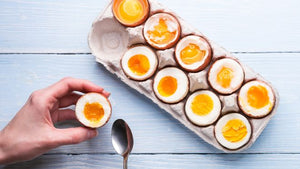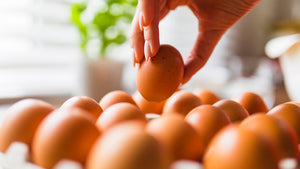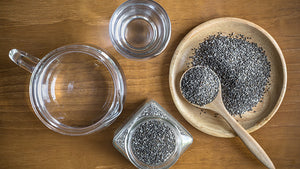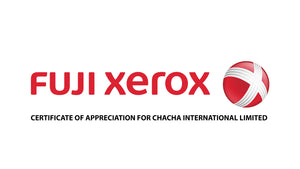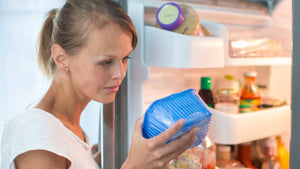What to eat in a day if you're gluten-free, according to a dietitian

If you can't tolerate gluten, this is exactly how to make sure your body is still getting all the nutrients it needs, according to a dietitian.

Photo: iStock
Gluten-free diets have become increasingly popular in the last few years, touted as the answer to irritable bowel disease, a flat tummy and the magic pill for weight loss. Gluten is the protein portion of some grains including wheat, rye, spelt and barley. Some people must follow a strict gluten-free diet for life, others feel better eating less gluten in their diet. However, following a gluten-free diet for someone who is otherwise healthy is unnecessary and can often compromise nutrition. This is because more time and thought needs to go into a nutritionally balanced, gluten-free diet because grabbing a sandwich on the run is no longer an option.
People diagnosed with coeliac disease must follow a strict gluten-free diet for life. Just the smallest exposure to gluten can cause debilitating symptoms such as a rock-hard abdomen, severe bloating, foggy head and gut cramps and cause inflammation and damage to the lining of the small intestine. This then compromises nutrient absorption and can cause nutrient deficiencies like anaemia and osteoporosis.
There is now another clinical category of people who should also avoid gluten, which is known as ‘non-coeliac gluten sensitivity’ (NCGS). This can be a frustrating condition because these people have all the symptoms of coeliac disease but no detectable immune reaction to gluten. For this reason, it can also be very hard to diagnose but generally these people feel considerably better avoiding gluten in their diet.
For someone who doesn’t have coeliac disease or NCGS, there may be other times where a health professional suggests you follow a gluten-free diet temporarily. This may be because of inflammatory bowel disease, leaky gut or following a hefty dose of antibiotics.
Some important nutrients are often lacking from a gluten-free diet and some nutrients may be poorly absorbed. These include:
B Vitamins
There are 8 B vitamins but the ones found in gluten-containing grains include niacin, riboflavin, thiamine and folate. B vitamins are water-soluble and are expelled from the body easily, so need to be eaten daily. B vitamins help our body use carbohydrates, protein and fat as fuel. Alternative sources can be found in:
- Thiamine: sunflower seeds, legumes such as black beans and navy beans, pulses, lentils and oats
- Riboflavin: Soy beans (edamame), tempeh, green leafy vegetables, yoghurt, eggs, turkey, asparagus and almonds
- Niacin: tuna, salmon, chicken, turkey, beef, lamb, prawns, peanuts and brown rice
Iron
Iron isn’t necessarily lacking in a gluten-free diet but it can be poorly absorbed by someone with damage to their small intestine after gluten exposure. Regular wheat bread and cereals are often fortified with iron. The best sources of iron are from red meats, the dark meat (such as thigh and drumstick) of chicken and turkey as well as green leafy vegetables, tofu, lentils and legumes.
Fibre
Switching from a wholesome wholegrain bread or cereal to a processed gluten-free variety when starting a gluten-free diet can compromise the amount of fibre in the diet. This can cause digestive upsets and constipation, often making the symptoms you went gluten-free for in the first place even worse! The best high-fibre, gluten-free foods include:
- Wholegrains such as: brown rice, buckwheat, quinoa, amaranth, millet, sorghum and if you’re not a coeliac, you can have rolled or steel cut oats
- Fruit – especially with an edible skin or dried fruit
- Vegetables – especially ones that can be cooked such as broccoli, cauliflower, cabbage and potato with the skin and sweet potato
- Lentils, legumes and pulses (e.g. Black beans, chickpeas, red kidney beans, navy beans, split peas)
- Nuts and seeds including chia seeds
So, what does the perfect ‘gluten-free day on a plate’ look like? Here are a variety of meals and snacks to create the prefect gluten-free meal plan:
Breakfast:
- 2 egg frittata with roast sweet potato
- Quinoa and vegetable scrambled eggs
- Brown rice porridge with Greek yoghurt, cinnamon and berries
- Sugar-free amaranth flake cereal + berries + milk
Lunch
- Quinoa pasta with tinned tuna in a tomato and vegetable sauce and a sprinkle of Parmesan cheese
- Green leafy vegetable salad with chickpeas, mixed seeds and avocado and an olive oil vinaigrette
- Thai beef salad with vermicelli noodles and a gluten-free dressing
- Chicken, egg and vegetable brown fried rice
Dinner
- Thai turkey burgers patties with a rice noodle and cabbage salad and gluten-free Asian dressing
- Lean eye fillet steak with a jacket potato and steamed asparagus
- Mexican chilli with black beans and corn served with guacamole and brown rice
- Indian dahl with brown rice
Snacks
- Brown rice crackers and natural peanut spread
- Vege sticks and hummus
- Dried fruit & nut mix
- Home-made bliss balls (using dried fruit, nuts, seeds, cacao, coconut)
- Fresh fruit and Greek yoghurt
http://www.bodyandsoul.com.au/nutrition/nutrition-tips/the-perfect-glutenfree-day-on-a-plate/news-story/bd3e6a9556920e1cc76b3e0ece509614
- Perfect Earth Foods
